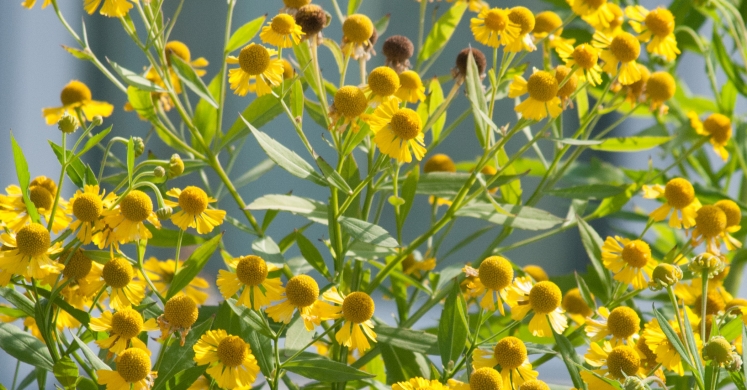Blog

#bioPGH Blog: Sneezeweed
 A resource of Biophilia: Pittsburgh, #bioPGH is a weekly blog and social media series that aims to encourage both children and adults to reconnect with nature and enjoy what each of our distinctive seasons has to offer. From the best times to plant seasonal flora and enjoy their peak blooms, to astronomical events and creatures to keep an eye and ear out for, Phipps will keep you in the know with what’s going on in our environment!
A resource of Biophilia: Pittsburgh, #bioPGH is a weekly blog and social media series that aims to encourage both children and adults to reconnect with nature and enjoy what each of our distinctive seasons has to offer. From the best times to plant seasonal flora and enjoy their peak blooms, to astronomical events and creatures to keep an eye and ear out for, Phipps will keep you in the know with what’s going on in our environment!
As its name implies, common sneezeweed, or Helenium autumnale, can elicit a sneezing fit, but not in the same way that would send most individuals running indoors when the pollen count is high outdoors. This particular late-summer-to-fall blooming perennial relies on insects and other animals for pollination instead of wind, which prevents it from contributing to seasonal allergies. So where did this member of the Asteraceae family receive its name? The Menominee Indians of Wisconsin, who found the plant’s dried flowers and leaves to helped alleviate head colds by inducing sneezing! Although this plant was once frequently used in folk medicine, common sneezeweed is in fact poisonous to humans and livestock if consumed. Fortunately, what sneezeweed lacks in edibility it makes up for with visibility; similar in appearance to family members like daisies and sunflowers, this perennial comes in a wide variety of colors, shapes and sizes that are bound to draw admirers from pollinators and people alike.
Connecting to the Outdoors Tip: If you’re in the market for some vibrant fall foliage that won’t send your allergies into a tizzy, consider planting sneezeweed at your home with your family. The plant prefers moist, rich soil and a full sun, which makes it an ideal candidate for inclusion in rain gardens. For a fun, all-ages activity, try an outdoor color match: simply head outside with different shades of yellow or green paint swatches and see which one matches the parts of the plant.
Continue the Conversation: Share your nature discoveries with our community by posting to Twitter and Instagram with hashtag #bioPGH, and R.S.V.P. to attend our next Biophilia: Pittsburgh meeting. Plus, if you have any other questions about the plant, you can also send a tweet to @SneezeweedPC to "talk" to Phipps' own sneezeweed plants on our Center for Sustainable Landscapes green roof.
Additional Resources:
Plant of the Week: Common sneezeweed - USDA Forest Service
Outdoor Color Match - Inner Child Fun
Photo © Paul g. Wiegman

